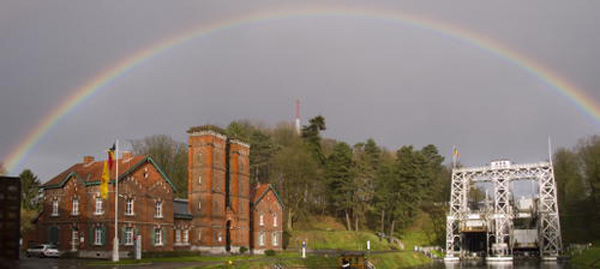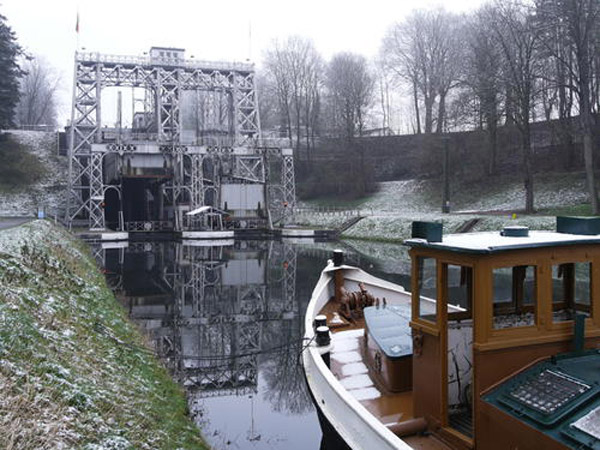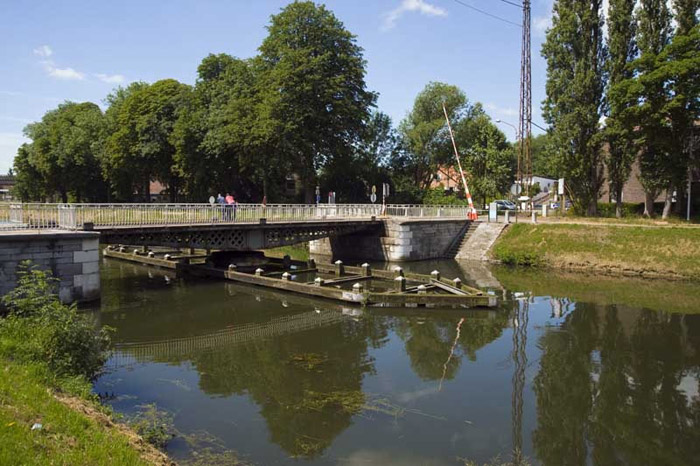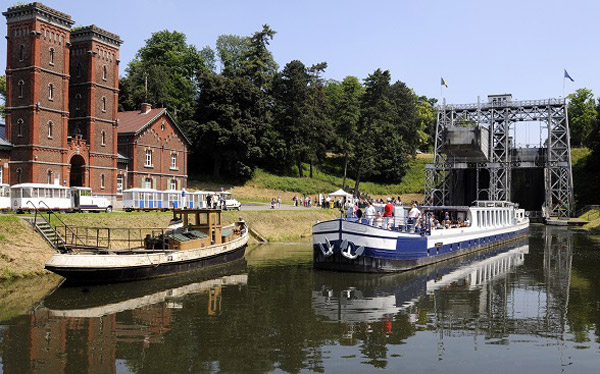Europe's Canal du Center - World Cultural Heritage in Belgium
The Unesco Scientific, Educational and Cultural Organization has recognized the Canal du Center of Belgium as a World Cultural Heritage in 1998.

Around Borinage Chaleroi around the 12th century there were large coal mines discovered and exploited. The road to transport coal from the mines to the outside to the extremely winding and arduous coal gathering factories. This work was done by hired porters, who carried piggyback on their backs, moving in steep, small and narrow paths to reach the riverside area. From there coal is transported to small wooden boats and taken to the gathering area. Because of having to move by small boats, the amount of coal transported is very limited, and the loss of energy is not effective.

Although there is a system of rivers and canals around the area, it is too small for large ships to be able to move in, so transporting goods can only rely on small boats. To overcome this situation, at the same time, to transport the locally exploited coal to the Condé area of France, the Canal du Center was built.

Before the lock was built, in 1807, Emperor Napoleon signed an ordinance for the construction of a canal to route the irrigation trade between Mons and Condé. The canal was completed in 1818. At that time transferring coal from Belgium's Mons to France was able to use the irrigation route, but the link between Mons and Charleroi at that time was not built. And so the joint plans and projects to explore this route have been researched and proposed by the researchers together.

After many studies with the cooperation of experts from France, Holland, Belgium, England . the main problem is that if there are some river sections in this link branch there is too big difference. about altitude. It is this problem that hinders the navigation of large vessels and the best way to deal with it is to use the elevator system to reduce the difference in difference.




This task was entrusted to British engineer Edwin Clark , who was responsible for building an elevator system that reduced the difference of the height of four ladders, of which one ladder had a height of 15.40 meters and three units. The remaining is 16.93 meters. Before that, in 1872-1875, engineer Edwin Clark participated in a project to build an elevator on the river at Trent - Mersey canal. Although this elevator system was not as successful as expected, but the British architect was still assigned the responsibility to design and build elevator system in Belgium, these 4 elevators are also known as Canal du Canal du Center.


The first elevator was built at the Houdeng-Goenies section which was completed in April 1888. At that time, the Belgian government was very happy when the elevator system worked well and was anxious to complete 3 elevators. again. However, due to many reasons, the construction of the remaining 3 elevators was delayed many times.
It was not until 1909 that the construction of the remaining three elevators began. Although during that time there was a war with Germany, this work was not pasted because the government recognized the strategic value when the road was completed and cleared. By August 1917, the entire waterway route more than 14 km long with 4 elevators called Canal du Center was opened and cleared.

By 1957, a new canal from Mons to Havre was built, which made the Canal du Center system no longer needed. During many years of unused use, there were many suggestions for dismantling these elevators. In the 1980s and 1990s, Canal du Center received many awards for its design and construction techniques. Therefore a project to develop a nomination document for the European Canal du Center, a World Heritage Site , was launched and in 1998, the project was officially recognized.

The Canal du Center is recognized as a World Cultural Heritage under the criteria (iii) and (iv).
Criterion (iii): Canal du Center's elevator system is a testament to the remarkable development of scientific and hydraulic engineering of Europe in the 19th century.
Criterion (iv): Canal du Center's elevator system is also a good example of the application of digital technology to build canals and waterways.
- Historical center of Brugge
- Villa Stoclet - World cultural heritage in Belgium
- Bell towers - World cultural heritage in Belgium and France
- Venice and canal system
- The new Neolithic flint mines of Spiennes
- Brussels Square
- Historical center of Vienna
- Tallinn's historic center
- Explore the most magnificent canal in the ancient world
- Historic center of Salzburg
- Macau historical center
- Historic center Berat and Gjirokastra
 Suzhou classic bonsai garden - China
Suzhou classic bonsai garden - China Chau Nguyen Dynasty
Chau Nguyen Dynasty Thai Son Mountain - World Wonder
Thai Son Mountain - World Wonder Ancient villages of Shirakawa-go and Gokayama
Ancient villages of Shirakawa-go and Gokayama